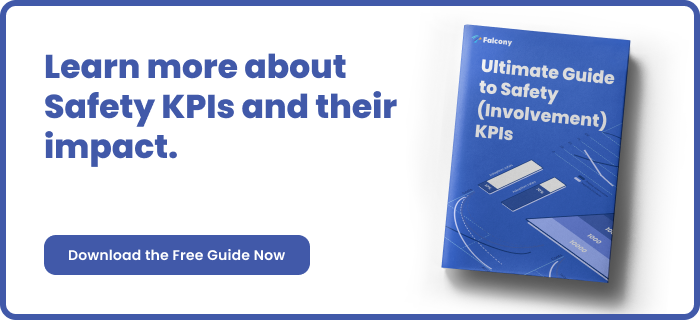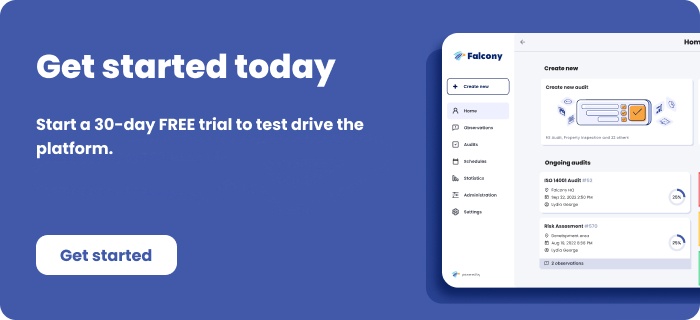9 Critical Loss Prevention Risks in Transportation and Trucking
In the fast-paced and often unpredictable world of transportation and trucking, risk management is an essential component for ensuring business continuity and profitability.
From cargo theft to driver safety, the transportation industry faces numerous potential hazards that can lead to significant financial and operational losses. Below, we explore nine critical loss prevention risks that businesses in the trucking sector must address to safeguard their operations.
Cargo Theft
Cargo theft is one of the most prevalent and costly risks in the transportation industry. Whether it's pilfered during transit, while the truck is parked, or at terminals, the impact of lost or stolen goods can be devastating. Beyond the immediate financial loss, cargo theft can damage a company’s reputation and customer trust. To combat this risk, businesses must implement stringent security measures such as:
-
GPS tracking to monitor the location of shipments in real-time.
-
Surveillance systems on trucks and in warehouses to deter theft.
-
Secure parking areas that are well-lit, fenced, and ideally monitored by security personnel.
-
Driver training on recognising potential threats and ensuring vehicles are locked at all times when unattended.
-
Collaboration with local law enforcement and other industry players to share information about theft trends and prevention strategies.
Driver Fatigue
Driver fatigue remains a leading cause of accidents in the transportation industry. Studies consistently show that fatigued drivers are significantly more likely to cause or be involved in road accidents. Tired drivers not only risk their own lives but also the safety of others on the road. To mitigate this risk, companies should:
-
Adhere to regulated driving hours to ensure drivers are not overworked.
-
Ensure drivers take regular breaks to prevent fatigue from setting in during long hauls.
-
Invest in driver monitoring systems that can detect signs of fatigue, such as erratic driving patterns or diminished focus.
-
Promote a healthy lifestyle for drivers, including education on the importance of sleep, rest, and diet to maintain alertness on the road.
-
Implement shift rotations where possible, giving drivers ample recovery time.
Vehicle Maintenance Issues
Vehicle breakdowns or malfunctions can lead to costly delays, accidents, and unplanned downtime. A fleet of trucks must be regularly maintained to ensure they are roadworthy and able to perform at their best. When maintenance is neglected, minor issues can escalate into expensive repairs or catastrophic failures. An effective maintenance schedule should include:
-
Pre-trip inspections to check essential components such as tyres, brakes, and lights.
-
Timely repairs to fix any wear and tear before they compromise safety or operational efficiency.
-
Tracking the performance of key vehicle components, such as fuel systems, engines, and transmissions, using telematics.
-
Predictive maintenance tools that analyse vehicle data and provide early warnings of impending issues.
-
Engaging with trusted service providers and technicians for regular service and specialised repairs.
Weather-Related Hazards
Severe weather conditions, such as snow, rain, fog, and ice, pose a significant risk to road safety and transport operations. In such conditions, the risk of accidents increases exponentially, as vehicles are more likely to lose control on slippery roads. To minimise weather-related risks, businesses should:
-
Train drivers to handle adverse weather conditions, including safe driving speeds, braking distances, and awareness of reduced visibility.
-
Adjust delivery schedules during extreme weather events, prioritising urgent shipments and delaying less time-sensitive deliveries.
-
Equip vehicles with modern weather-resistant technology, such as advanced wipers, tyres designed for adverse conditions, and weather prediction systems that alert drivers to upcoming changes.
-
Ensure appropriate tyre and equipment maintenance, as the performance of tyres in wet or icy conditions is crucial for maintaining safety.
Compliance Violations
Regulatory compliance is a significant concern in the trucking industry. Non-compliance can result in significant fines, penalties, and damage to a company’s reputation. It is essential for businesses to stay ahead of evolving regulations and ensure that their drivers and operations comply with national and international transport laws. To avoid compliance issues, companies must:
-
Stay updated on the latest regulations regarding driving hours, cargo handling, environmental standards, and safety protocols.
-
Employ compliance management systems to track and manage drivers’ hours of service (HOS), vehicle inspections, weight limits, and other critical compliance data.
-
Use telematics and electronic logging devices (ELDs) to monitor and record driving times and ensure compliance with hours-of-service regulations.
-
Conduct regular audits to ensure that all aspects of the business adhere to the required legal standards.
-
Provide training for drivers and staff on regulatory changes to ensure compliance.
Accidents and Collisions
Collisions on the road are a constant threat, and accidents involving commercial trucks are often far more costly than those involving smaller vehicles. These accidents can result in fatalities, significant vehicle damage, and legal claims. Additionally, the negative publicity associated with trucking accidents can harm a company’s public image. To reduce the risk of accidents, trucking companies should:
-
Invest in driver safety training, teaching techniques to reduce distractions, maintain safe following distances, and handle aggressive driving situations.
-
Implement risk-reduction technologies, such as collision avoidance systems, lane departure warning systems, and automatic emergency braking.
-
Adopt strict protocols for accident reporting and investigation, ensuring that all accidents, regardless of severity, are thoroughly investigated and learned from.
-
Focus on driver health to reduce the likelihood of accidents caused by health-related issues, such as heart attacks or strokes while driving.
Cybersecurity Threats
With the increasing reliance on technology for fleet management and logistics, the risk of cyberattacks has escalated. Hackers may target critical systems, such as GPS tracking or dispatch software, to disrupt operations, steal sensitive data, or ransom the company’s infrastructure. To prevent cyber threats, businesses should:
-
Invest in robust cybersecurity measures, including firewalls, encryption, and intrusion detection systems.
-
Conduct regular system audits to identify vulnerabilities and ensure that software is up-to-date with the latest security patches.
-
Ensure staff are trained to recognise phishing attempts and other forms of cybercrime, as human error often plays a significant role in breaches.
-
Back up data regularly to avoid the devastating effects of ransomware and ensure that critical information is protected.
Theft of Fuel
Fuel theft is a significant risk, particularly as fuel prices rise. Criminals may target parked trucks or fuel tanks, siphoning off fuel for resale, leading to substantial financial losses. To reduce the likelihood of fuel theft, companies can:
-
Implement fuel monitoring systems that provide real-time data on fuel levels, detecting any irregularities or suspicious drops.
-
Use anti-theft devices, such as locks on fuel caps and tanks, which can deter thieves from stealing fuel.
-
Ensure that drivers store their vehicles in secure areas, particularly overnight or during rest stops, reducing the chances of theft.
-
Increase awareness of the issue by educating drivers on how to spot suspicious behaviour and reporting incidents promptly.
Inadequate Insurance Coverage
Transporting goods comes with inherent risks, including damage, theft, and accidents, all of which can result in significant financial losses. Without adequate insurance coverage, businesses expose themselves to considerable financial risk. To mitigate this exposure, companies should:
-
Regularly assess their insurance policies to ensure they are up to date and provide adequate coverage for all aspects of transportation, including cargo, vehicle damage, liability, and accidents.
-
Ensure adequate coverage for all potential risks, such as damage to goods, loss of cargo, theft, and legal claims.
-
Review policy terms and conditions to ensure that the coverage is comprehensive and aligned with the business’s specific needs.
-
Work with specialised insurance providers who understand the unique risks associated with the transportation and trucking industry.
Conclusion
The transportation and trucking industry faces a wide range of risks, each of which can lead to significant financial and operational disruptions if not adequately managed. By identifying these critical loss prevention risks and implementing appropriate strategies, businesses can protect their assets, improve safety, and maintain operational efficiency. Whether it’s enhancing security protocols, investing in technology, or ensuring compliance, a proactive approach to risk management is essential for long-term success in this high-stakes industry.
If you're looking for a platform to manage any and all types of risks, we've got you covered. Falcony | Risks is easy-to-use, boosts two-way communication, has customisable workflows, automated analytics, vast integration possibilities and more. Start your 30-day trial or Contact us for more information:
We are building the world's first operational involvement platform. Our mission is to make the process of finding, sharing, fixing and learning from issues and observations as easy as thinking about them and as rewarding as being remembered for them.
By doing this, we are making work more meaningful for all parties involved.
More information at falcony.io.

Related posts
Types of Loss Prevention Reports for Maritime
In the maritime industry, loss prevention is critical to maintaining safety, security, and...
9 Critical Loss Prevention Risks in Warehousing and Distribution
In the fast-paced world of warehousing and distribution, businesses must continually address...
15 Types of Safety Incidents in Logistics and Transportation
In the logistics and transportation industry, safety is paramount. The sector involves the movement...







